
Hunger and malnutrition are rampant among those populations. Infants, children, adolescents, adults and older people are suffering from one or more of the multiple forms of malnutrition, including wasting, deficiencies of iodine, vitamin A and iron, in addition to scurvy, pellagra and beriberi. We are working closely with United Nations agencies, nongovernmental organizations, academic institutions and other civil societies, to provide guidance and technical support to our countries on nutrition norms and standards in addition to continuous monitoring of the nutritional status to allow for early response in emergency and crises situations.
Why is nutrition important in emergencies?
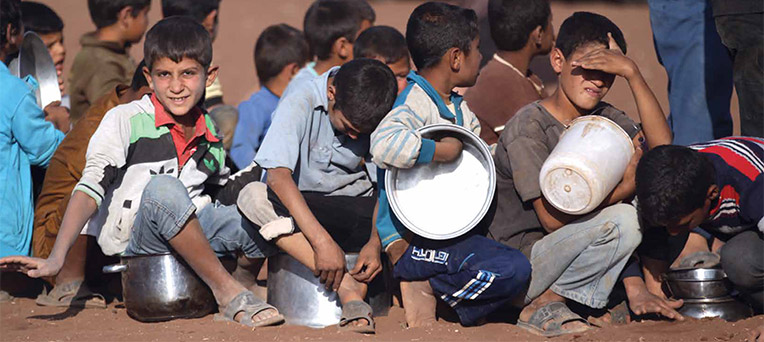
During emergencies, rates of malnutrition and death may increase substantially. Emergencies result in outcomes that can increase the risk of malnutrition, illness and death, and it is critical to protect the nutritional status of those affected. People who suffer from acute malnutrition are far more likely to become sick and die. Moreover, people who become sick are more likely to be undernourished.
Nutritional status of countries in emergencies
Those countries are Afghanistan, Djibouti, Iraq, Lebanon, Libya, Pakistan, Palestine (Gaza Strip), Somalia, Sudan, Syrian Arab Republic and Yemen. People living in those countries suffer from one of more forms of malnutrition. For example, children often suffer from severe acute and chronic malnutrition, while other subgroups may suffer from significant undernourishment and high rates of micronutrient deficiencies, as well as overweight, obesity and diet-related noncommunicable diseases (such as heart disease, stroke, diabetes and some cancers).The gap in food security and malnutrition between countries affected by conflict and other countries in the Region has been growing – the level of undernourishment in countries affected by conflict, at 27.2%, is now six times higher than the level in non-conflict countries (4.6%).
Prevalence of food insecurity is also almost double in countries affected by conflict (19.0% compared to 9.8%). Conflict, unrest and population displacement is increasing the prevalence of malnutrition.
While 7.5 million children (9.1%) across the Region are wasted, the prevalence was highest in Djibouti, Sudan, Yemen and Somalia and has been increasing in Iraq, Libya, Egypt and Sudan.
The highest rates of stunting were recorded in Yemen, Pakistan, Afghanistan, Sudan and Djibouti, ranging from between 29.7% and 46.5%.
The lack of access to diverse healthy diets in crisis situations also gives serious cause for concern, as does the impact of emergencies on breastfeeding and infant and young child feeding.
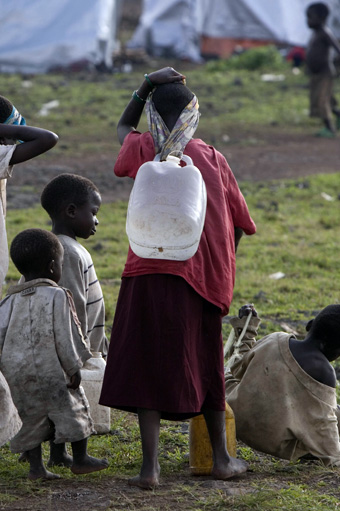
What we do in nutrition emergencies
The WHO Regional Office for the Eastern Mediterranean works closely with the United Nations High Commissioner for Refugees (UNHCR), the United Nations Children's Fund (UNICEF), the World Food Programme (WFP), nongovernmental organizations, academic institutions and civil society organizations, to provide guidance and technical support to our countries on nutrition norms and standards, in addition to continuous monitoring of the nutritional status to allow for early response in emergency and crises situations. More specifically, WHO:</>
provides effective technical support through the production and dissemination of scientifically validated and up-to-date:
provides effective technical support through the production and dissemination of scientifically validated and up-to-date:
guidelines, norms, criteria and methodologies relating to nutritional standards
information on food/ration composition
assessments of malnutrition, including specific nutrient deficiencies
improved management of severe and moderate malnutrition
monitoring nutritional status
nutritional surveillance for both prevention/early warning and response when emergencies arise
strengthens, through information dissemination and training, national, subnational and international capacities to meet the nutritional needs of populations in emergencies
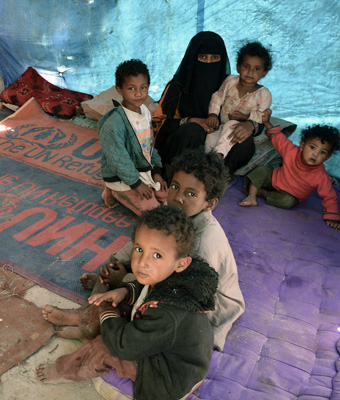
How we address the problems linked to nutrition in emergencies
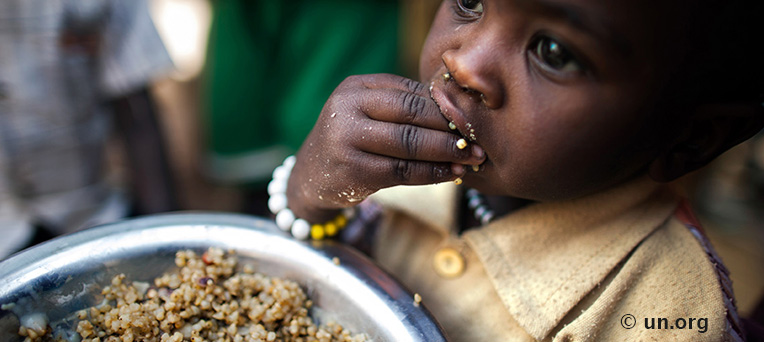
We address some of the problems linked to nutrition in emergencies through the “Nutrition strategy for the Eastern Mediterranean Region, 2020–2030”. We developed this comprehensive nutrition strategy in response to the strong demand from countries for WHO technical support to improve nutrition in general and in emergencies. It provides clear guidance on how to support and protect nutrition in emergency situations.
Recommended priority actions for countries include:
- ensuring integration of disaster and emergency preparedness into relevant policies and programmes;
- ensuring that policies and practices in emergency situations and humanitarian crises promote, protect and support breastfeeding;
- providing capacity-building and essential supplies for health workers for screening of malnourished children and treatment of severe cases at health facilities;
- ensuring contingency and emergency preparedness plan in nutrition and food security enabling them to respond effectively and protect the nutritional status of the population, particularly the most vulnerable, in any emergency situation; and
- participating in and contributing to international networks to exchange food safety information, including for managing emergencies.
What we are doing on the ground
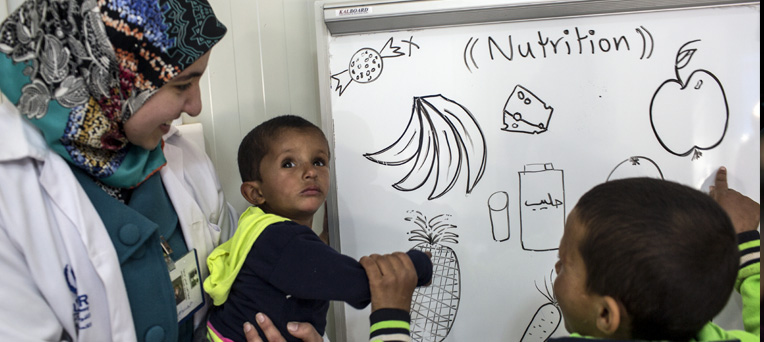
We are working with partners to support countries to:
- reduce stunting and wasting among children under 5 as too many children in the Region are stunted or wasted;
- screen severe cases of malnutrition at health facilities and build capacity of health institutions to ensure treatment of complicated cases;
- establish strong nutrition surveillance systems, which are vital for both prevention/early warning and response when emergencies arise.
While there is more to be done to protect the nutritional status of populations in emergencies, especially the most vulnerable groups, some key achievements are outlined below.
- 12 countries are implementing treatment of severe acute malnutrition with nutritional care and treatment of moderate acute malnutrition.
- 10 countries are implementing food distribution programmes – such as emergency food aid programmes, direct food-based transfers, foods for infants and young children – to prevent acute malnutrition.
- 7 countries are implementing programmes on nutritional care and support for people living with HIV and those with tuberculosis ‒ groups which are particularly vulnerable to undernutrition.
- 4 countries are implementing deworming programmes to tackle soil-transmitted helminths and other parasites that can contribute to malnutrition.
- 6 countries are implementing programmes for screening severe cases of malnutrition at health facilities and building capacity of health institutions to ensure treatment of complicated cases.
- Several countries are procuring emergency kits to save the lives of malnourished children.
- In Yemen, WHO is collaborating with local health authorities and technical partner the World Bank, through the Emergency Health and Nutrition Project, to establish a surveillance system which prioritizes and closely monitors communities at elevated risk of famine, and hence save millions of lives.
- In Syria, data from the 2019 SMART survey revealed several pockets of emerging chronic and acute malnutrition. Infant and young child feeding practices were poor, with only 28.5% of mothers choosing early initiation of breastfeeding. Such data are essential in targeting interventions to improve the nutritional status of vulnerable groups and a total of 19 440 cases of global acute malnutrition were detected and referred for treatment.
- In 2018, the trend analysis of national nutrition sentinel surveillance data from health facilities and community sentinel sites in Afghanistan showed an overall increase in the rates of severe acute malnutrition levels and underweight. Access to such data is needed to address issues such as insecurity and geographical constraints which remain the greatest barriers towards ensuring optimal implementation and monitoring of nutrition interventions at health facilities and inadequate coverage of services.
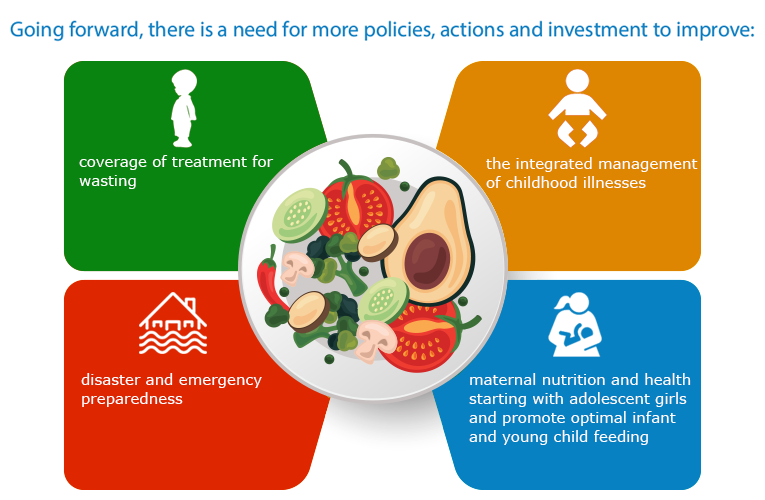
Stories from the field
Baby Bushra beats the odds in Hajjah
Baby Jihad makes a full recovery in two weeks in Hajjah
Fighting to survive: saving the lives of Yemeni malnourished children
Related links
Addressing nutrition in emergencies (WHO headquarters)
FAO Regional Office for Near East and North Africa
Nutrition in emergencies (Unicef)
Nutrition in emergencies list of publications (WHO headquarters)
Strategy on nutrition for the Eastern Mediterranean Region 2020 – 2030
UNHCR Middle East and North Africa
Unicef Middle East and North Africa
United Nations World Food Programme
WHO in Sudan: nutrition surveillance bulletin 2020
WHO in Yemen: nutrition surveillance infographics
WHO in Yemen: therapeutic feeding centres infographics
WHO issues situation report calling for urgent action to address malnutrition in northeast Syria



